Life Saving Potential of Alpha Lipoic Acid
Alpha lipoic acid is one of the most powerful nutrients to reduce inflammation and stabilize blood sugar levels. The scientific world has increasingly become more aware of the crucial relationship between dietary habits and chronic disease. The Institute of Cancer Research, Dr. Mel Greaves, weighs into the debate and proposes that genetic factors contribute no greater than 10% to the development of cancer, citing environmental factors for 90% of the blame (11).
Numerous studies have examined the supplementation of alpha lipoic acid in the diet and the ability to prevent and treat nutrition related chronic disease. Alpha lipoic acid (ALA), sometimes referred to as lipoic acid, is a powerful antioxidant with key potential to unlock various health promoting capabilities. There is clear evidence that if you have yet to make ALA-containing foods a staple of your diet, you should start now.
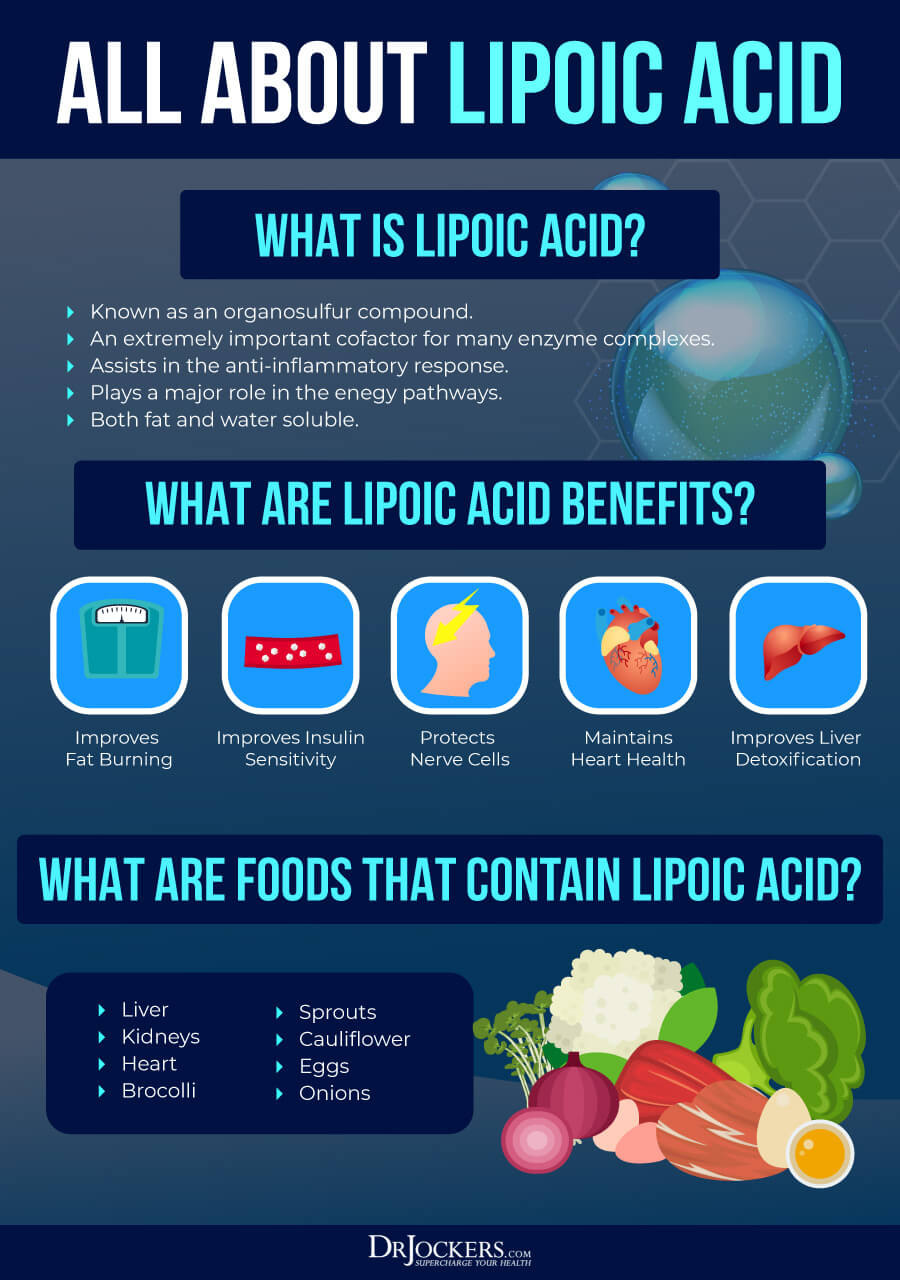
What Is Alpha Lipoic Acid?
ALA is a naturally occurring thiol antioxidant, or simply stated, a sulfur containing chemical produced in plants and animals (1, 8). Alpha lipoic acid is found in the following dietary sources: (4, 5, 8)
Fruits & Vegetables: Green leafy vegetables are some of the highest sources of ALA, including spinach and broccoli. Other sources are tomatoes and potatoes.
Organ Meat: Kidney, heart, and liver from grass-fed animals.
Supplement: Supplement dosage size can range from 50-600mg/day, depending on the desired therapeutic effect you wish to achieve. As with any dietary supplement, you should speak with your healthcare provider to learn if an ALA dietary supplement is right for you.
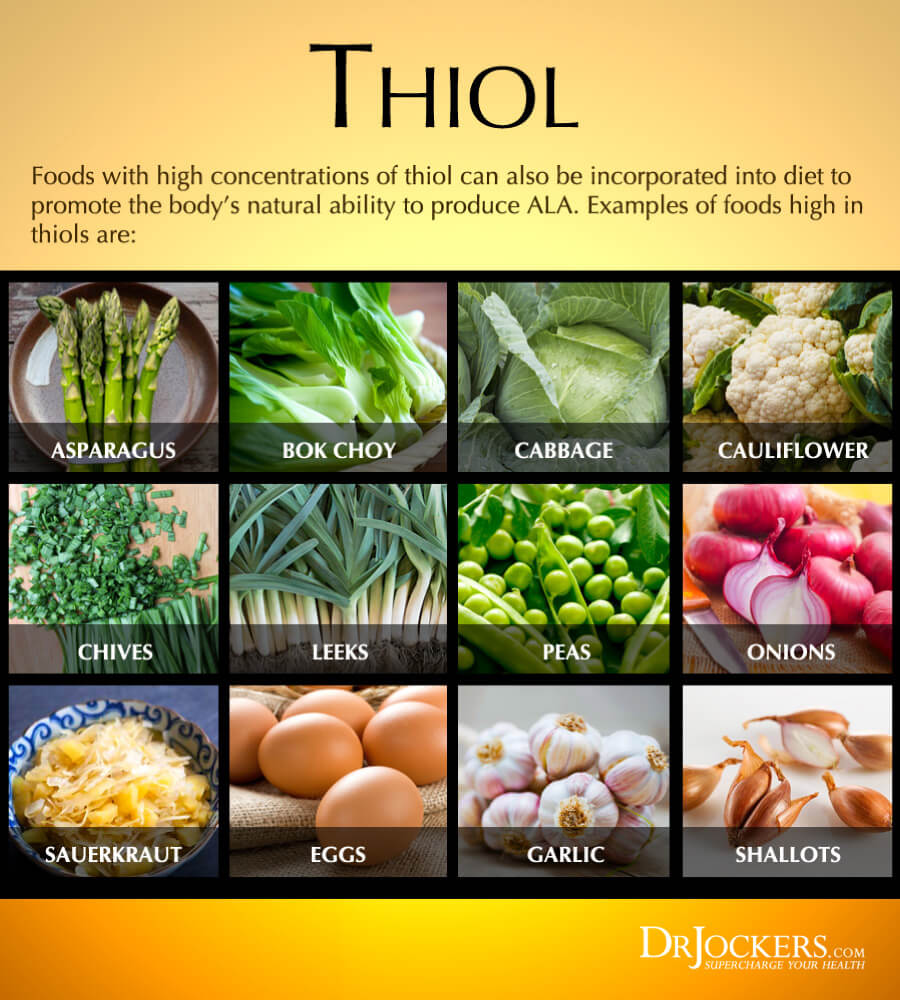
Antioxidants Are Essential for Health
The average Western diet is depleted of basic nutrients that our bodies require to not only sustain health but also ensure both physical and psychological well being. Antioxidants are not recommended for healthy living, but rather are absolutely essential. A study performed on patients with Down syndrome concluded that a high antioxidant diet consumed over a 2 year period had a significant improvement in the patients’ cognitive abilities (9).
Antioxidants are one of the body’s defense mechanisms designed to protect cells from the burden of oxidative stress. Hence, the word can be broken down into antioxidants. Think of other words such as anti-aging, antibacterial, and antidepressant. Who wants signs of aging, and who even more desires oxidative stress?
Anti-Oxidants Neutralize Free Radicals:
The primary defense strategy of antioxidants is to neutralize free forms of oxygen known as free radicals or reactive oxygen species (ROS). Free radicals are lonely atoms that will do anything for a partner, including stealing other atoms from their already tight-knit relationships. As a result, these highly reactive atoms create cellular damage and disturb biochemical processes necessary for maintaining health. (2)
Alpha lipoic acid can be broken down in the body into a form known as dihydrolipoic acid. Both forms of ALA act as potent antioxidants for biological reactions taking place in the mitochondria of our cells. Often referred to as the powerhouse of our cells for its role in generating energy, a deficiency in ALA has been associated with various chronic disorders and different types of cancer.
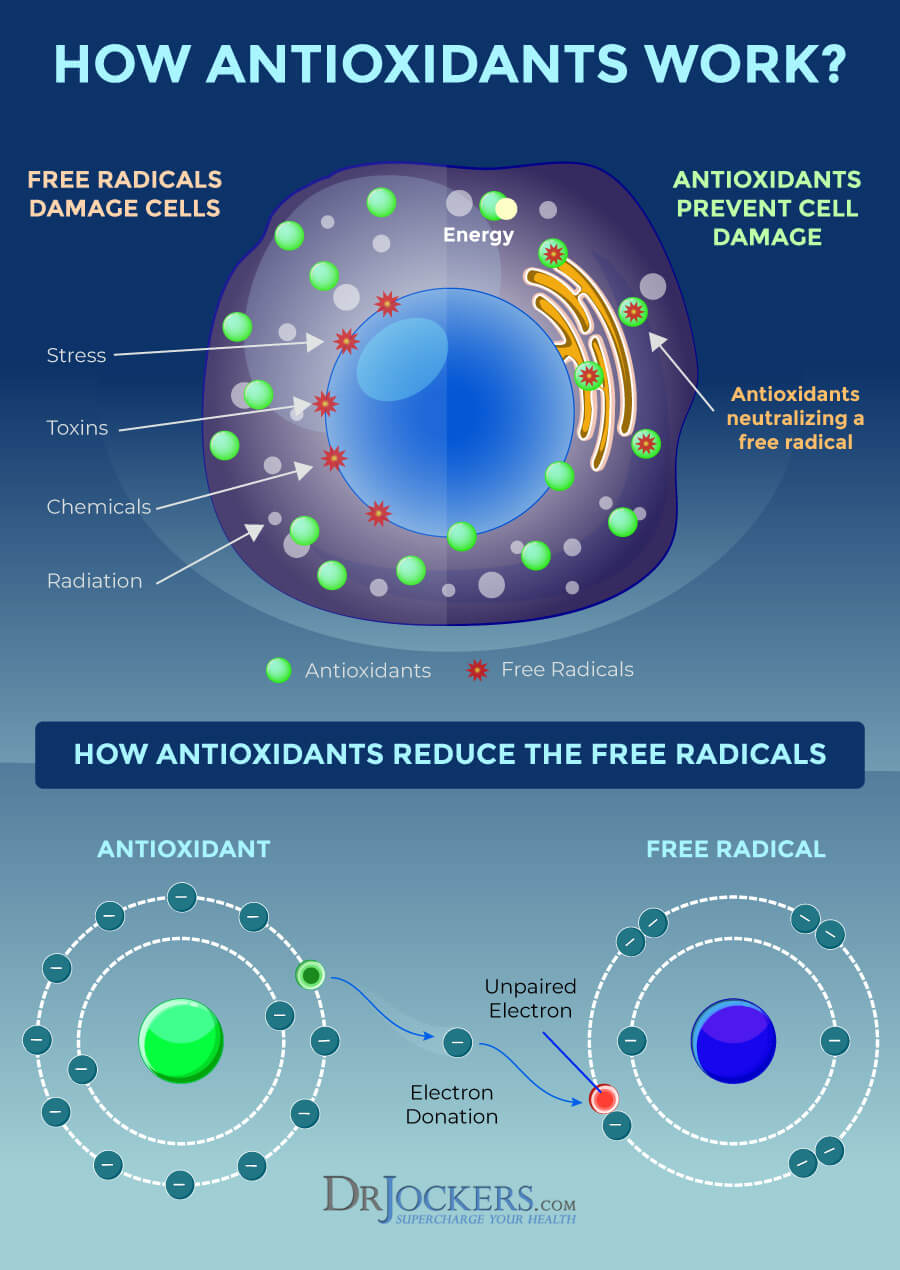
Type-2 Diabetics and Oxidative Stress
Patients with type-2 diabetes are more susceptible to oxidative stress due to their cells’ ability to excessively produce free radicals. These free radicals, in turn, attack cell membranes in a process described as lipid peroxidation. When the scale is tipped too greatly in favor of free radicals, antioxidants are quickly depleted, and other complications are linked to diabetes, including the following: (1, 3, 7)
Retinopathy: A leading cause of blindness in the United States. Retinopathy is a result of abnormal blood vessels in the eye in diabetic patients.
Neuropathy: Nerve damage that can lead to a variety of symptoms, including numbness in legs and feet, to more severe problems of the heart.
Nephropathy: A complication of the kidneys that results in kidney damage or kidney disease.
This is why I put 150mg of ALA into my Vision Protect supplement that I use with many clients who are struggling with blood sugar and vision problems.
ALA Regulates Glucose Metabolism
ALA may help treat individuals with type-2 diabetes because it has been found to not only inhibit lipid peroxidation, but it also appears to regulate blood glucose. Studies have found that ALA initiates glucose uptake in the blood by regulating the control of GLUT4, which acts like insulin. GLUT4 is required to transport glucose, and when promoted by ALA to get the job done, this glucose transporter is efficient at maintaining blood glucose levels so diabetics can avoid spikes in blood sugar. (1, 8)
Take, for instance, how efficient a team would be in building a home with no building materials available on site. If you are paying the workers by the hour, you certainly do not want to see the crew pull up to the future home site with a golf cart to get the job done.
No, in fact, it would probably take a variety of trucks to transport materials ranging from lumber to concrete to complete all tasks. Our cells are no different than a home project. When provided with the tools and supplies, they can function with optimal performance.
In fact, pharmaceutical companies understand the life altering biological capabilities that remain dormant in diabetic patients. Metformin is a highly profitable and synthetically produced diabetic medicine that stimulates the same effect on the glucose transporter as ALA can naturally provide (1).

Possible Risks with ALA Supplementation
Side effects were observed in patients when the ALA supplement dose exceeded 2,000 mg/day. These side effects included skin reactions, loss of appetite, and hypoglycemia, or the condition of low blood sugar. Following dosage adjustments, 1,200 mg/day of ALA supplementation was preferred for optimal glycemic control with zero notable risks associated. (1)
Another study found that when ALA is consumed as a dietary supplement, unintended cardiovascular risks were seen in patients who do not undergo exercise training (8 ). When exercise was utilized in combination with ALA supplements to control glucose, there were no adverse health effects on cholesterol or blood pressure. These possible risks associated with ALA supplementation in diabetics raise the question: Which is worse? Loss of sight, kidney, and nerve function, or working up a sweat while listening to your favorite tunes?
The verdict may still be out on whether or not ALA successfully contributes to decreasing the risk of type 2-diabetes, but research reveals that ALA has promising potential not yet fully understood. It may be more likely that ALA can be an excellent therapy treatment to couple with currently prescribed diabetic medications for enhanced glycemic control (1).

ALA Recycles Other Antioxidants
Diabetic stressors in the body are also largely influenced by the availability of other antioxidants. Both ALA and its reduced form, dihydrolipoic acid, not only act as antioxidants, but they also stimulate the regeneration of other powerful free radical scavengers. Increases in the production of vitamin C, vitamin E, glutathione, and several enzymes that exhibit antioxidant like behavior have all been found in association with the availability of ALA in the body (1, 2, 4).
Researchers find that these antioxidants are consistently depleted when the body is suffering. When antioxidant levels are low or diminished, oxidative stress can wreak havoc on cellular pathways and all organs in the body. Although the mechanism by which ALA supports the production of other antioxidants is not yet fully understood, ALA may provide the thiol compound or sulfur that some proteins are missing in order to fulfill their duties and provide protection (10).
ALA Promotes Detoxification
Alpha lipoic acid, along with several of the other antioxidants ALA helps to regenerate, detoxify the body of heavy metals (4). Chronic heavy metal exposure is a risk factor associated with the progression of numerous diseases, ranging from cardiovascular to neurodegenerative diseases. The contamination of metals in our environment enters our bodies through the foods we eat, the air we breathe, and the water we drink.
For its ability to reduce risks and treat the body from heavy metal poisoning, ALA is a natural chelation agent. In other words, ALA effectively binds to and removes heavy metals from the blood. In fact, alpha lipoic acid was historically used in Germany to treat poisoning following consumption of a mushroom known as Deathcap. (4)
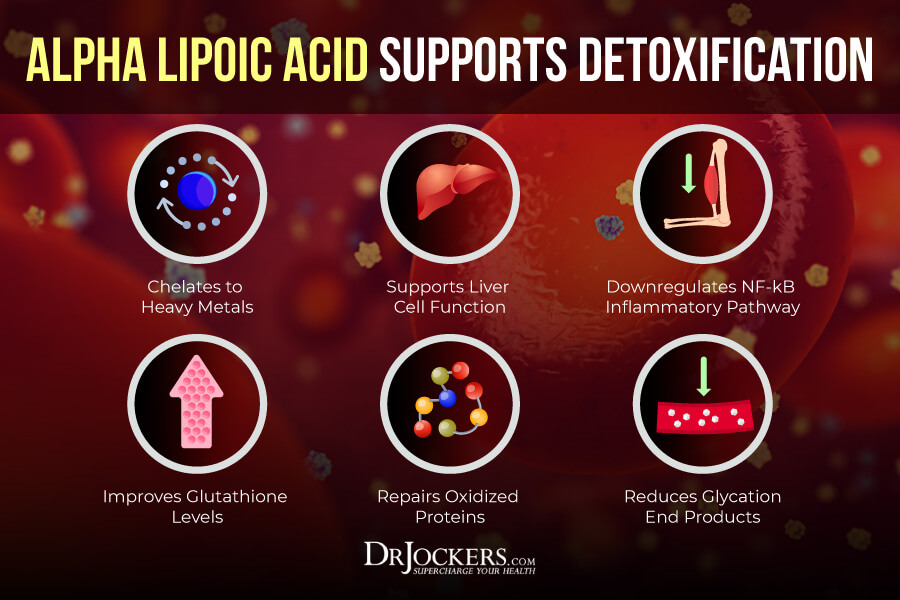
ALA Prevents & Treats Cognitive Decline
The use of ALA not only benefits physical health but also promotes cognitive, psychological, and emotional well being. Dr. Jay Gingrich, a respected researcher in the field of developmental psychobiology, stated in 2005 that “oxidative stress is the new stress” (2).
With the occurrence of brain related illnesses on the rise, it is no surprise that oxidative stress is a leading cause of brain damage. Stressors in Western culture have us eating less nutritiously, exercising less frequently, and ultimately allowing our bodies to function in a state of chronic stress. Why do we compromise our health so frequently?
When oxidative damage affects the brain, cognitive function, vitality, and mortality are negatively impacted. The following neurodegenerative disorders and psychiatric ailments are linked to oxidative damage in the brain. Are these health risks worth the trade-off? (2, 4, 9)
Depression: Researchers performed postmortem studies of individuals’ brains who suffered from major depression. What they learned is astonishing and yet may have been prevented with adjustments to lifestyle factors and specifically, an increase in dietary ALA consumption.
Numerous biological markers were apparent, which represent oxidative damage. The brains had significantly increased levels of those extra vicious free radicals known as reactive oxygen species. Also apparent were exceedingly low levels of vitamin E, zinc, coenzyme Q10, and an altered form of glutathione. (2)
Anxiety: Nitric oxide (NO) is a type of free radical that also triggers the production of free radicals in cells. When fewer antioxidants are available than there is NO, these free radicals are allowed to react with other biological processes and molecules, including DNA. These damages lead to apoptosis or suicide of cells that were once healthy. (2)
Currently prescribed anxiety medications can result in tolerance, addiction, and sedation (2). What if the natural and safer treatment is simply found on your dinner plate?
Bipolar disorder: NO is also correlated to numerous other mood disorders, including bipolar disorder (2).
Schizophrenia: An increase in vitamin E, vitamin C, and fish oil supplementation in the diet of patients with schizophrenia had protective properties noted by an improvement in the patient’s symptoms (2).
Alzheimer disease: Heavy metal build is increasingly learned as a major risk factor for brain related diseases. The chelation ability of ALA to detoxify these metals is a potential therapeutic agent for the chronic disease. ALA is increasingly being used as a medical and nutritional supplement today and is observed to reduce cognitive decay and improve memory. (4, 5)
Down syndrome: By the age of 40, most patients with Down syndrome present with signs of Alzheimer disease (9). Although the damaging impact resulting from oxidative stress begins while a fetus is developing.
As previously mentioned, mitochondria provide cells with energy to function, and the brain requires a high oxygen supply to perform. With oxygen consumption at a high, there is simply more room for error. The resulting consequence is the formation of reactive oxygen species, which then become available to the developing brain. When ROS outnumber antioxidants, free radicals win the battle, and they have been found to react with other molecules in areas of the brain responsible for memory. (4, 9)
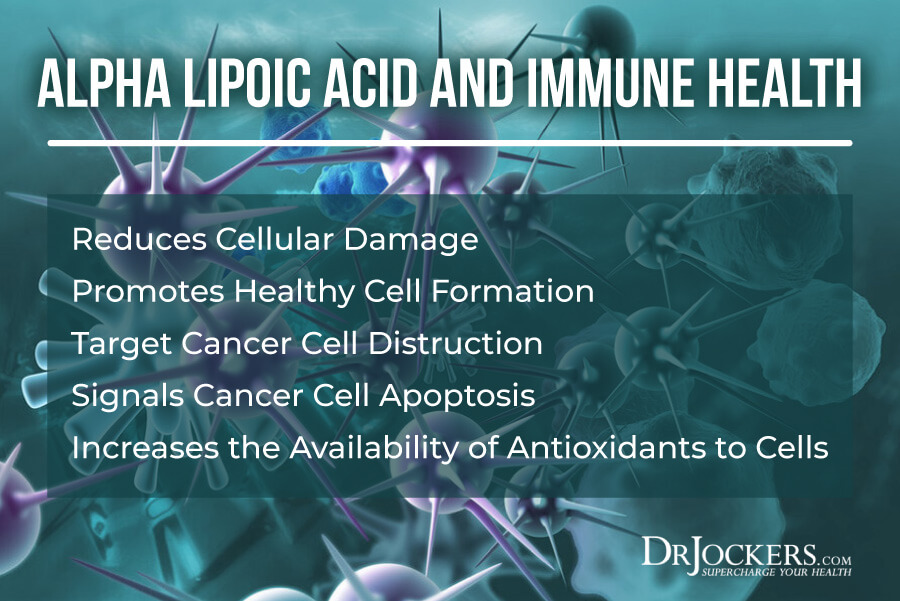
ALA Has Anticancer Properties
The potential for ALA to treat chronic disease includes various types of cancers. Researchers propose that ALA may benefit individuals with leukemia, colon cancer, ovarian cancer, and possibly breast cancer (5, 10).
Combined with its numerous antioxidant capabilities, ALA has been shown to inhibit cell proliferation as well as apoptosis in healthy cells (10). On the contrary, ALA may actually promote the destruction of cancerous cells.
Conventional cancer therapy treatment today involves processes that further increase DNA damage and create free radicals. Mitomycin C is a chemotherapy drug and antibiotic that is very efficient at causing cellular damage and depleting available antioxidant sources. Radiation treatment damages cells and is also responsible for initiating the growth of secondary tumors. (5, 6)
Prevention Starts Now
The potent antioxidant capabilities of Alpha lipoic acid are a preventative treatment for many life threatening illnesses. Researchers are still seeking to understand the biological pathways and any unintended consequences that result from ALA supplementation in the human diet.
It is always wise to speak with your doctor to confirm that a supplement will not adversely interact with a medication or other supplement you may be taking. It is also best to consume an ALA supplement no later than 30 minutes prior to a meal, as its absorbency rate can decrease by up to 60% (4, 5).
Introducing ALA Power CR
This product provides whole-body, multifunctional antioxidant activity that helps to maintain healthy, well-functioning cells. ALA Power™ CR is designed to neutralize free radicals in both the water-based and lipid-based portions of cells, help the body synthesize glutathione, and recharge important antioxidants.
Unlike regular alpha-lipoic acid, ALA Power CR’s patented, controlled-release formulation provides extended protection. In addition, biotin supports the function of alpha-lipoic acid in glucose metabolism.*
If you want to work with a functional health coach, I recommend this article with tips on how to find a great coach. On our website, we offer long-distance functional health coaching programs. For further support with your health goals, just reach out—our fantastic coaches are here to support your journey.
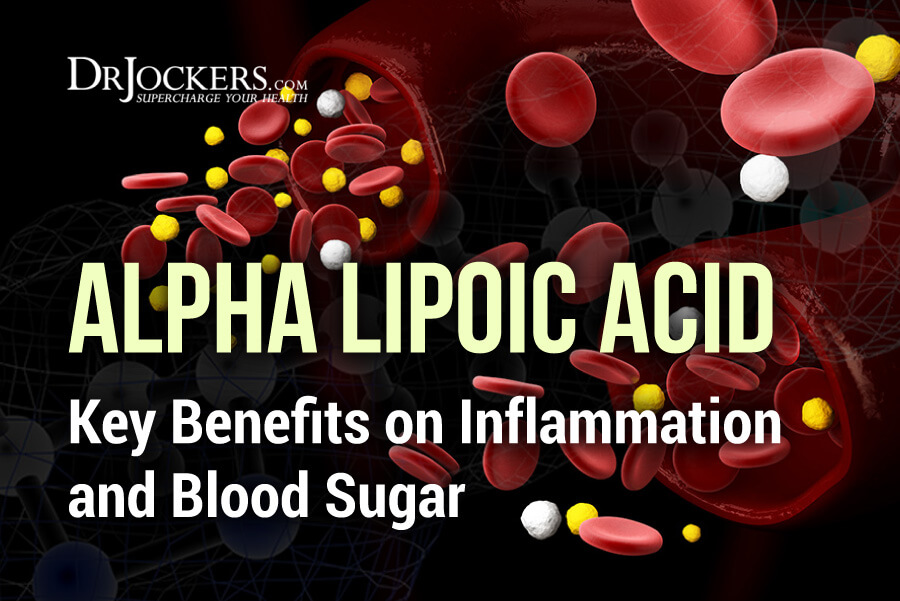
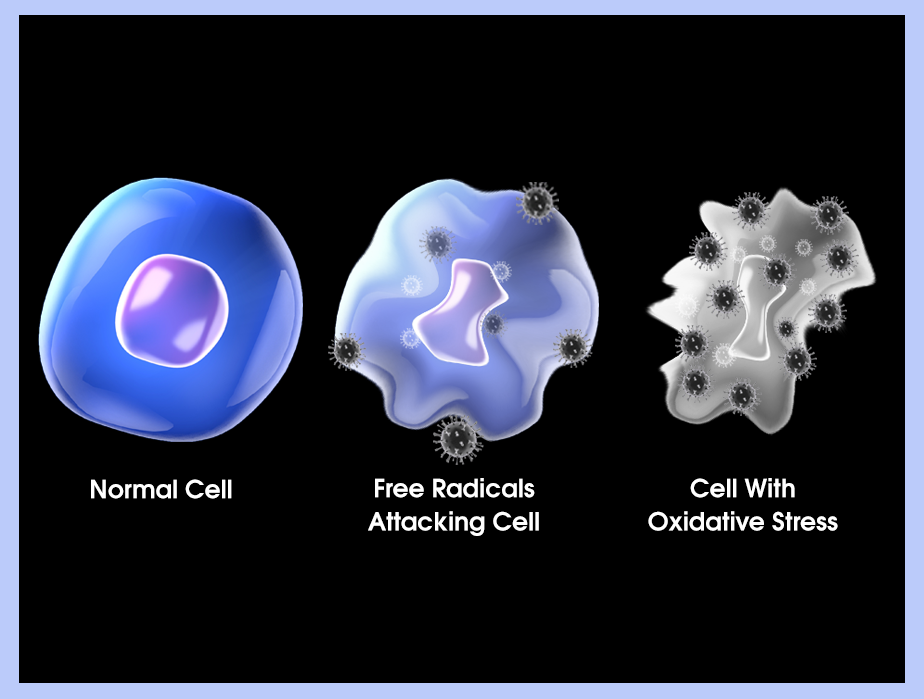

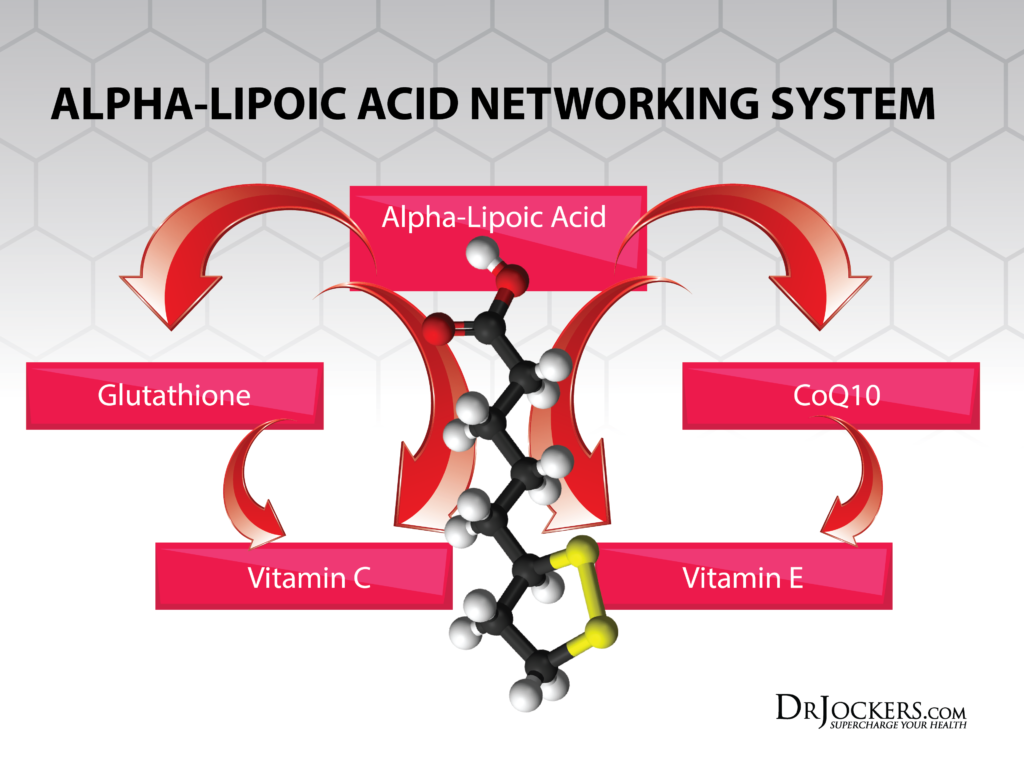

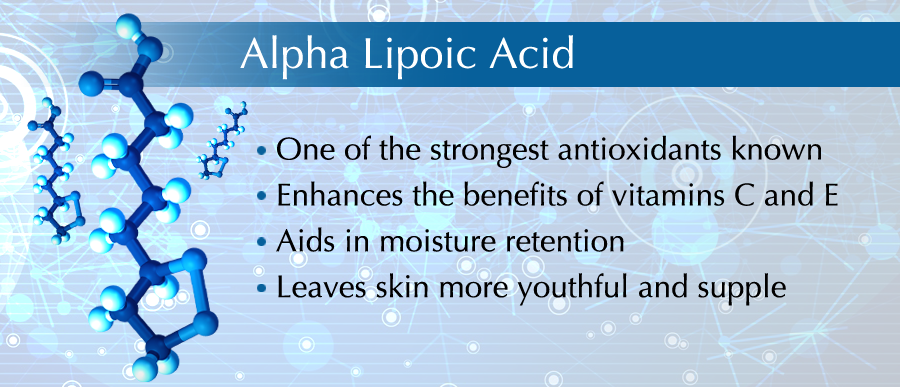





my fingers hurts alsomt all the time and i feel like i need to pop them every seconds..i thought its Arthritis the romatoid one.i went to orthopedic doc..he took some blood samples.it came negative.he said i dont have arthritis nor romatoid (thank god).he says its just stressed.he gave me muscle relaxer which helped for a while.i did some changes in my diet..started multivitamins,omega 3and its gettin better but its still there.thank u very much its always a pleasure to tune in every week with u
I am very happy to hear you are doing better and following some good suggestions Isa!
Is it okay to take glutathione at the same time as ALA?
Also, before I started taking ALA, I would take a serrapeptase in the morning (I think it was helping my sinuses) I’m not sure if i should take it at the same time as the ALA though… I will probably stop taking the Serrapeptase…
All three bottles say to take on an empty stomach. So it’s just easier to have them in the morning, after my coffee and while I’m drinking my water.
Thank you so much for all you do 🙂
Yes you can take these at the same time Margaret.
Hi.
Do you or your associates offer Telemed consultations?
I am trying to piece together supplement combinations.
Thru a Nutriva test I am deficient in B2 and ALA. I was told to possibly take a sodium based ALA and/or a Methylcobalamin
combination. I am MTHFR C677T and am naturally surviving with CVID. I live in Montana and not finding natural based providers.
Your help with other supplement suggestions and information has been the most valuable!!!
Thanks for any insight!
Trevagrewe@gmail.com
Yes we do and you can find that info here: https://drjockers.leadpages.co/long-distance-coaching-dr-jockers/